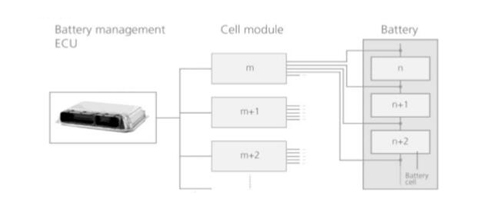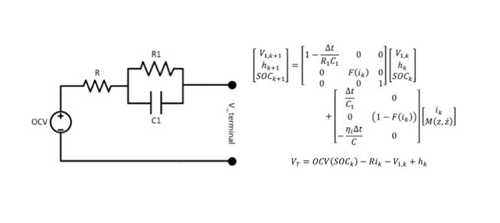With the booming development of electric vehicles and the rapid expansion of the power battery market, the demand for battery management systems is also expanding rapidly.
The design and application of the power battery management system (BMS) is inextricably linked to the entire power battery pack in two main ways. First, the design of the power battery management system depends on the characteristics of the power battery, and different battery types and characteristics correspond to different software and hardware designs of the battery management system. Secondly, the battery management system should be integrated with the power battery pack for overall testing, which includes both mechanical aspects, such as waterproof, dustproof, shock resistance, stability, heat dissipation and other aspects of design and testing, as well as overall testing.

Part I. Battery Management System Development Requirements
The battery management system mainly realizes functions such as high-voltage safety management, battery state analysis, energy management, fault diagnosis management, battery information management, etc. through the collection of information on battery voltage, temperature, current, etc., and communicates key parameters of the power system with the whole vehicle through CAN bus, so as to realize effective management of the battery system safety, avoid overcharging and over-discharging of the battery and prolong the battery life.
A very important core of the battery management system is the SOC algorithm, which gives the required SOC value in terms of different property dimensions, temperature dimensions and battery life cycle dimensions.
1. The instrument display value as a reference energy indicator for vehicle owners: vehicle owners need to make a comprehensive assessment of the vehicle's range through SOC. Judgment is made to assess the remaining available energy of the battery system (based on the results of the operating distance under different conditions), using the SOC as a (referenced to comparative values).
2. Vehicle control strategy reference needs: Vehicle control strategy needs to refer to the SOC value in order to manage the driving strategy. EVs need to achieve a balance between battery protection and energy saving based on the SOC value. When the SOC is high, the energy recovery needs to be limited). The power characteristics derived from the SOC can provide better protection for the battery life, and prevent the damage caused by inadequate power limitation.
In addition to the SOC evaluation algorithm, the software design of the power battery management system is actually a detailed design combining many functional modules. These functional modules include: safety protection strategy, (charge/discharge) energy control strategy, battery balance control strategy, battery balance strategy (SOH), functional state (SOF), energy state (SOE), fault and safety state (SOS), And other evaluation algorithms. At the same times reserve sufficient resources for communication and intelligent troubleshooting mechanisms to ensure a fast enough response time.
Part II. Modeled development process
1. MBD-based development process
The tools and model-based design methodology first designed, simulated, and verified the battery management control system, and then generated for it the Product Code. The algorithms and strategies of the battery management system need to conform to the modeled development strategies of traditional ECUs.
2. Control strategy development process for BMS
After defining the project requirements, develop a basic floating point controller model. A Simulink model of the battery is developed using the test data. This model provides information on battery dynamics during controller model validation, resulting in more accurate test results.

This process involves first unit testing the control submodules, then integrating the submodules, and then integrating the complete controller model and the Simulink's battery model is linked together and simulations are run to verify the basic functionality of the control logic. To further optimize the controller's algorithms, code for the control model was quickly generated and downloaded to a rapid prototyper to control the actual battery to Implementation of the verification of the algorithm.
The floating-point model is converted to a fixed-point model and the simulation is run again to verify the quality of the conversion. The engineers used MC/DC (Modified Condition/Decision Coverage) metrics to assess the completeness of the tests. After generating the product code for the model, they used the software to test in the loop to verify that the generated code was as designed run, in which Simulink's battery model is used to form a closed loop with the control code for the test.
3. Control strategy testing of the BMS
The available power of a lithium power battery can be estimated from the open circuit voltage (OCV) of the battery in the idle state, which is generally collected for each string in the battery pack for safety monitoring purposes.
The BMS hardware in the ring simulation test system mainly provides for testing the BMS control algorithm, functional verification, fault diagnosis, etc. A closed-loop test environment. The HIL simulation test system enables rapid development and validation of the control and diagnostic functions of the BMS. BMS products in the design and development process there are a variety of shortcomings, and continue to improve the functionality and performance of BMS products. .
In the final verification phase, the code is downloaded to their microprocessor-based battery control ECU. Using the code generated by the controlled object, they perform a hardware-in-the-loop simulation of the ECU to verify that the control software and ECU Whether the hardware is well integrated. The controller is installed in a prototype vehicle for reliability and durability road tests, the controller is calibrated using CANape, and the The ASAP2 calibration files used in the calibration tool are automatically generated along with the product code.
Contact: Rudy Yan
Phone: 0086- 188 0506 7911
Tel: 0086-592-7297239
Email: rudy@winack.com
Add: WinAck Group, Xiangbei Industrial Zone, Xiamen City, China